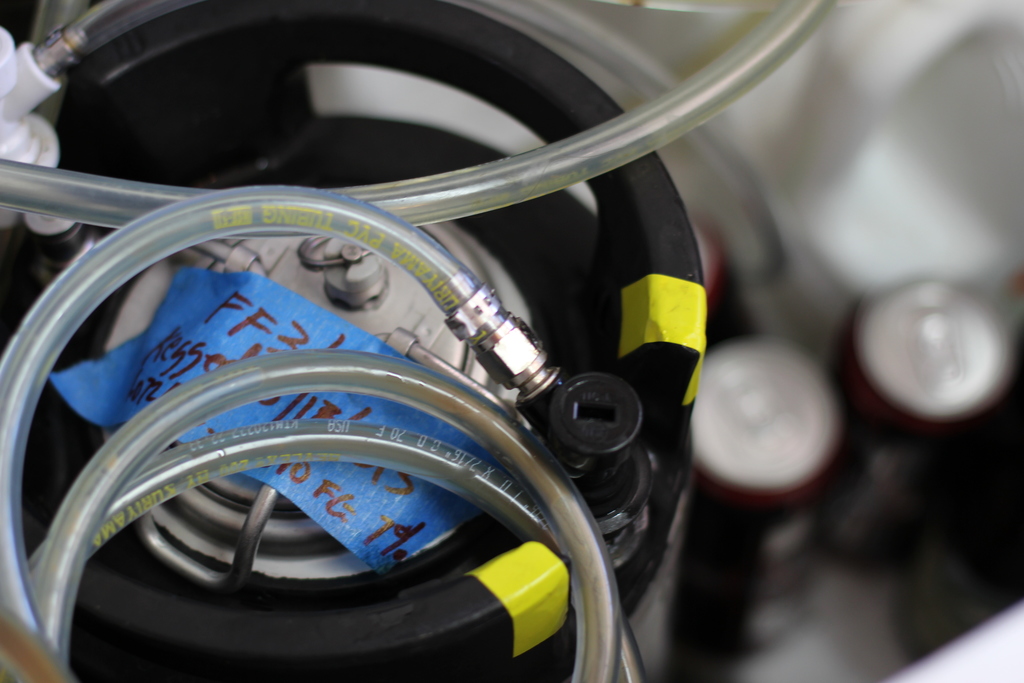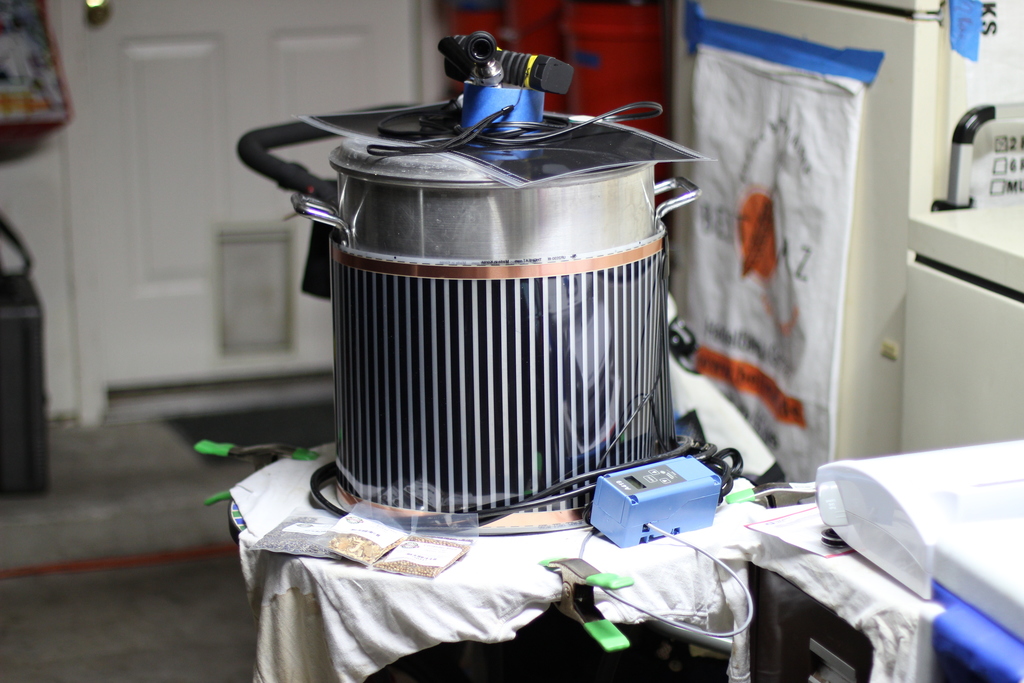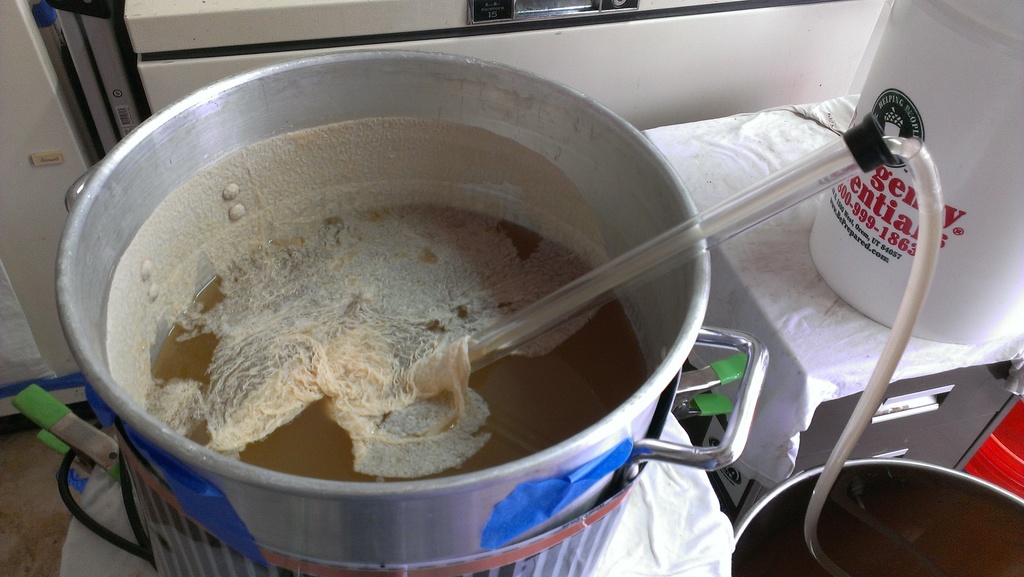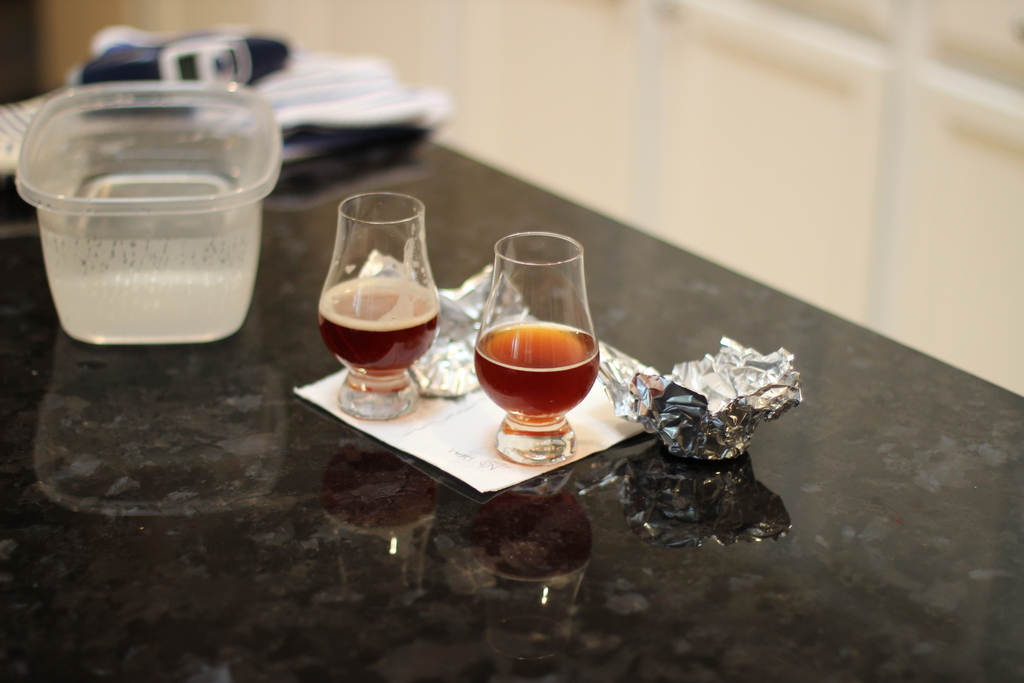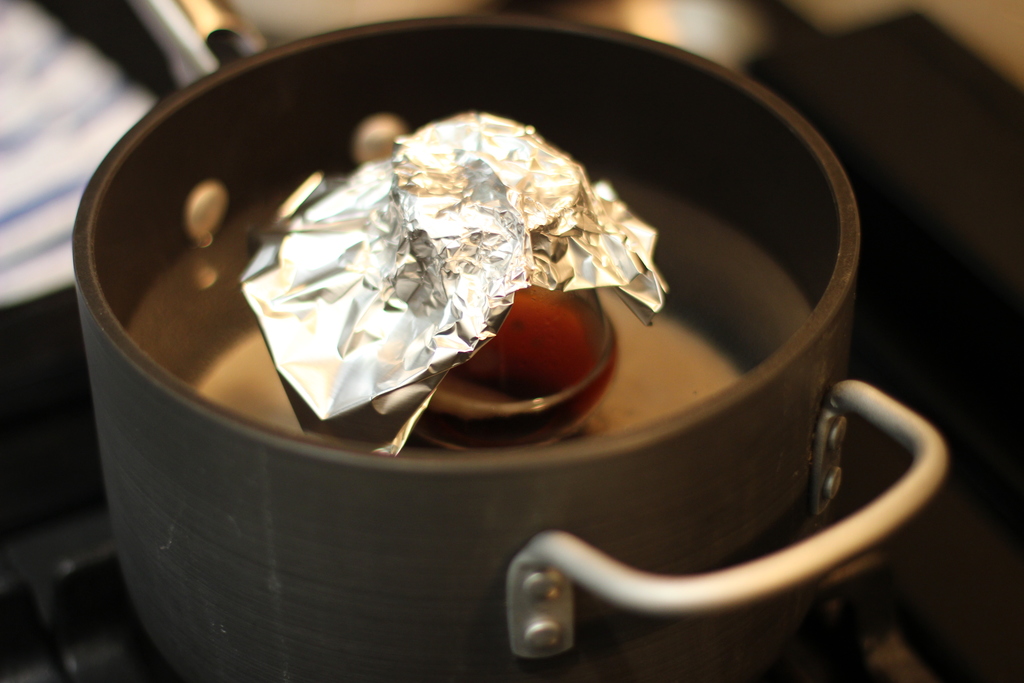
Rekkae V3 Saison using 3724 yeast S.G measurement: 1.001
When brewing the previous incarnation of my house saison, I had used the more trusty and beastly Wyeast 3711 French Saison strain which will, in the words of the internet, “it could ferment out an old gym sock”. True to the claims a fast and furious fermentation ended in 7 days leaving me with nothing but 1.000 S.G tasty saison. While it tasted very good and went over quite well I was still looking for something with a bit more spice. To me this meant using Wyeast 3724, the Dupont yeast strain.
The Dupont yeast strain provides a classic saison beer flavor, taste and aroma, including that special spiciness that I so desired. It almost seems like a no-brainer to use 3724, so why wouldn’t I just use that. 3724 can deliver all of these great characteristics but the actual use of this yeast during fermentation can be nerve-racking. A simple search of homebrew forums will yield many pages of “stuck fermentation” and hitting the 3724 “bump” at 1.030 S.G. I was well aware of these posts. I’ve read Farmhouse Ales from cover to cover twice, paying particular attention to the Dupont section that specifically discusses how best to handle fermenting with the strain. I felt well equipped to finally tackle this yeast.
I started fermentation on the cool side, around 70F… Slowly ramped the temp up into the high 70s, around 78F. I held this temp for about 2 weeks. Vigorous fermentation and the yeast eventually dropped out. I wasn’t worried; the schedule in Farmhouse Ales showed that most times, 3724 was fully attenuated in just 2 weeks. I pulled the first sample and before I even put in the hydrometer, I knew it wasn’t done. The beer poured thick and was very opaque, smelling way too sweet to be a dry, 1.004 S.G beer yet. I was crushed when I read 1.045 on the hydrometer, down from 1.066.
Beaten, but not broken, I pulled my first trick out of my sleeve. My fermwrap, temp controller was applied and I cranked the temp up into the mid 80s, around 85F. Two weeks past and progress was made; though only down to 1.030 S.G. I didn’t hesitate, and pushed the temp up to 90F, the upper limits of this yeast. At 5 weeks, I had dropped to 1.029 S.G. I was sure the temp would get things going again, but it hadn’t moved at all.
During this time, I had been swirling the carboy to help suspend the yeast, but that’s just not that effective. So I put together a simple device to rouse the yeast more effectively. I actually had thought of this when doing dry-hopping. Listening to one of the Brewing Network shows on cloning Avery’s Maharajah, Adam Avery was stressing the importance of hop contact time with the wort and he disclosed that at Avery they inject CO2 into the bottom of the fermenter to push up any dropped hops to ensure a good mix and contact between the hop and the beer. My guess was that this would also be a good technique for re-suspending yeast.
I used my 1/4″ air line from my CO2 tank and loosely fitted it over a plastic racking cane that had been sanitized. After starting the CO2 flow, I then lower the rod into the carboy. Pushing the rod to the bottom, I scrapped and turned until the entire wort was cloudy once again with yeast. At week 6, the S.G dropped to 1.018. Success! Another week and rousing to reach 1.009.
Finally, at 8 weeks, we’ve hit terminal gravity. 1.001 S.G at 90F adjusts to 1.004. Not bad. And it was completely worth the wait. The amount of complexity in the flavor this time is just amazing. The dry finish has just the amount of spice I like and the honey aroma is still present. I’m very much looking forward to this 3rd version.
For v4, I plan to keep the same fermentation schedule, but this time, I’ll start re-suspending the yeast as soon as I notice it drop out.
